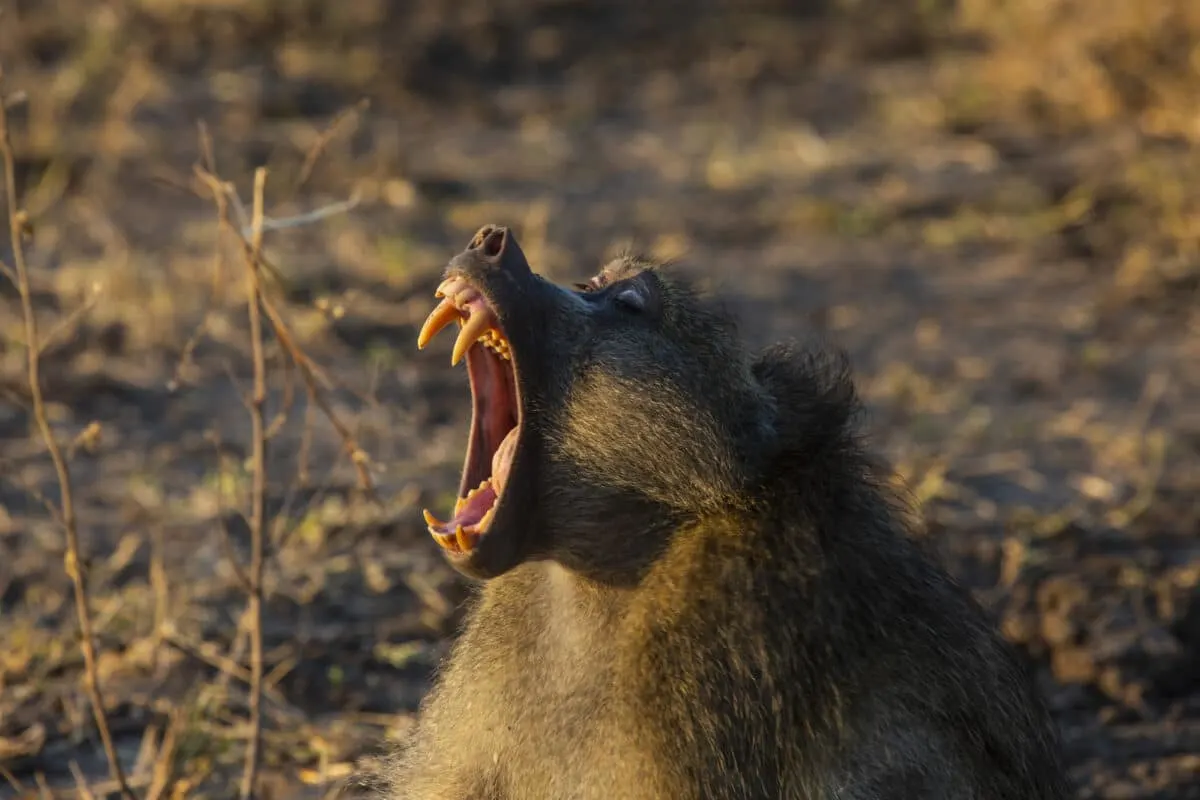In this post we’ll compare two primate superstars that both possess fascinating adaptations – the gorilla vs. baboon!
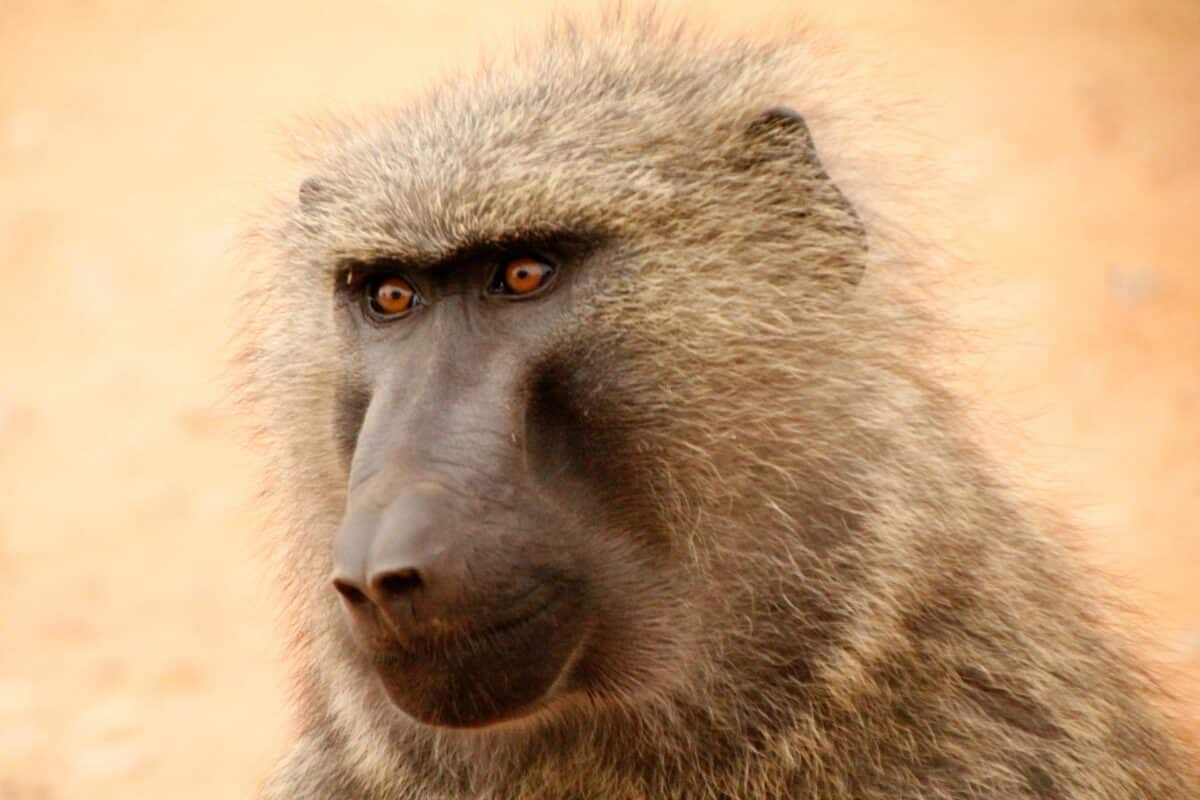
Gorillas and baboons have long been the center of attention for animal lovers, scientists, and researchers due to their fascinating behavior and their similarities to us humans. Did you know that gorillas are some of our closest relatives on this planet – sharing 98% or more DNA with humans? On the other hand, we “only” share 94% of DNA with baboons.
Both baboons and gorillas live in large troops with complex social structures ruled by dynamic hierarchies. While these primates may seem like rock stars because of their impressive physical appearances, it’s truly what lies beneath the surface that makes them so captivating!
Let’s dive into the fascinating differences between the gorilla vs. baboon. We will explore what sets these primate superstars apart – from their contrasting physical features to their distinctive habits.
Gorilla Vs. Baboon: Comparison Table
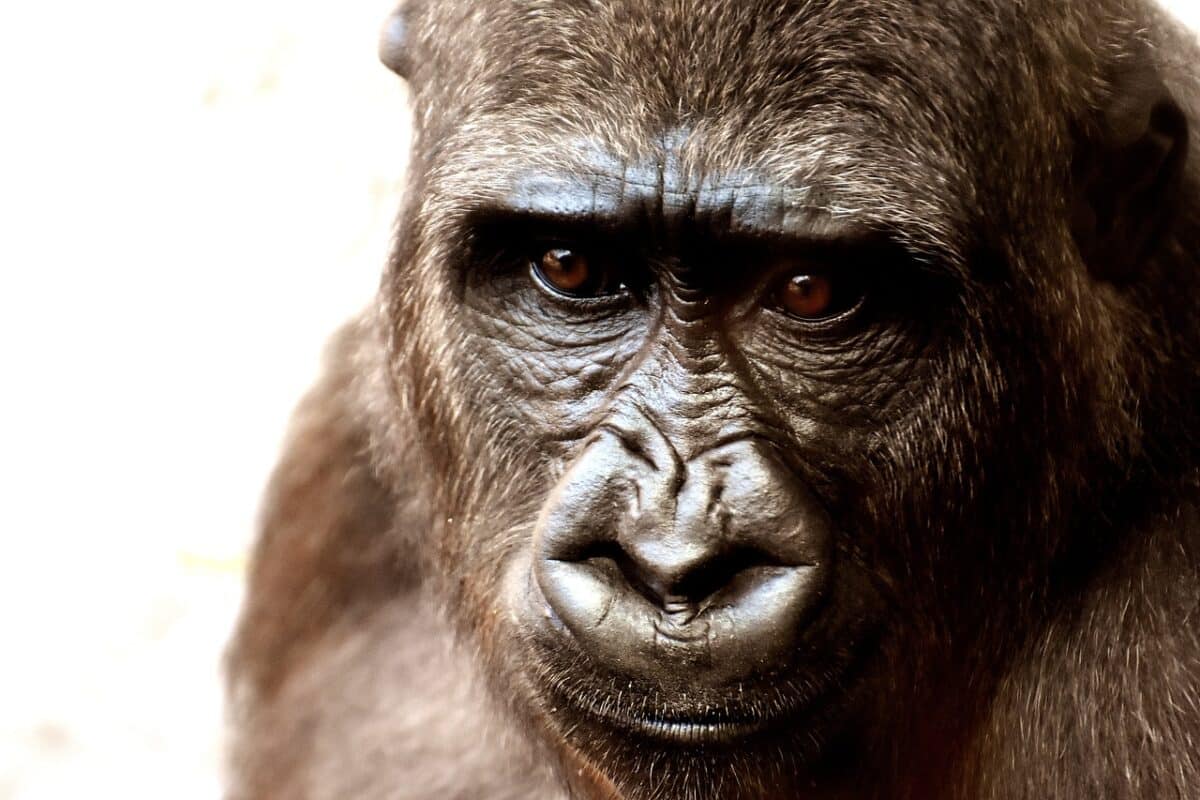
| Trait | Gorillas | Baboons |
|---|---|---|
| Physical Size | Largest primates, males weigh up to 500 pounds. | Smaller than gorillas, males weigh up to 100 pounds. |
| Physical Appearance | Broad shoulders, long arms, black fur. | Elongated muzzle, lighter colored fur. |
| Habitat | Central and East Africa | Africa and parts of Arabia |
| Diet | Primarily plants such as leaves and fruit | Omnivores, diet includes insects and small animals |
| Social Structure | Live in family groups led by silverback | Live in troops with dynamic hierarchies based on strength and dominance |
| Threats | Poaching and habitat loss | Habitat loss and human-wildlife conflict |
Gorillas
Gorillas are magnificent primates that are known for their physical strength, large size, and impressive black coats of fur.
Here are some interesting facts about these fascinating creatures.
Physical Characteristics
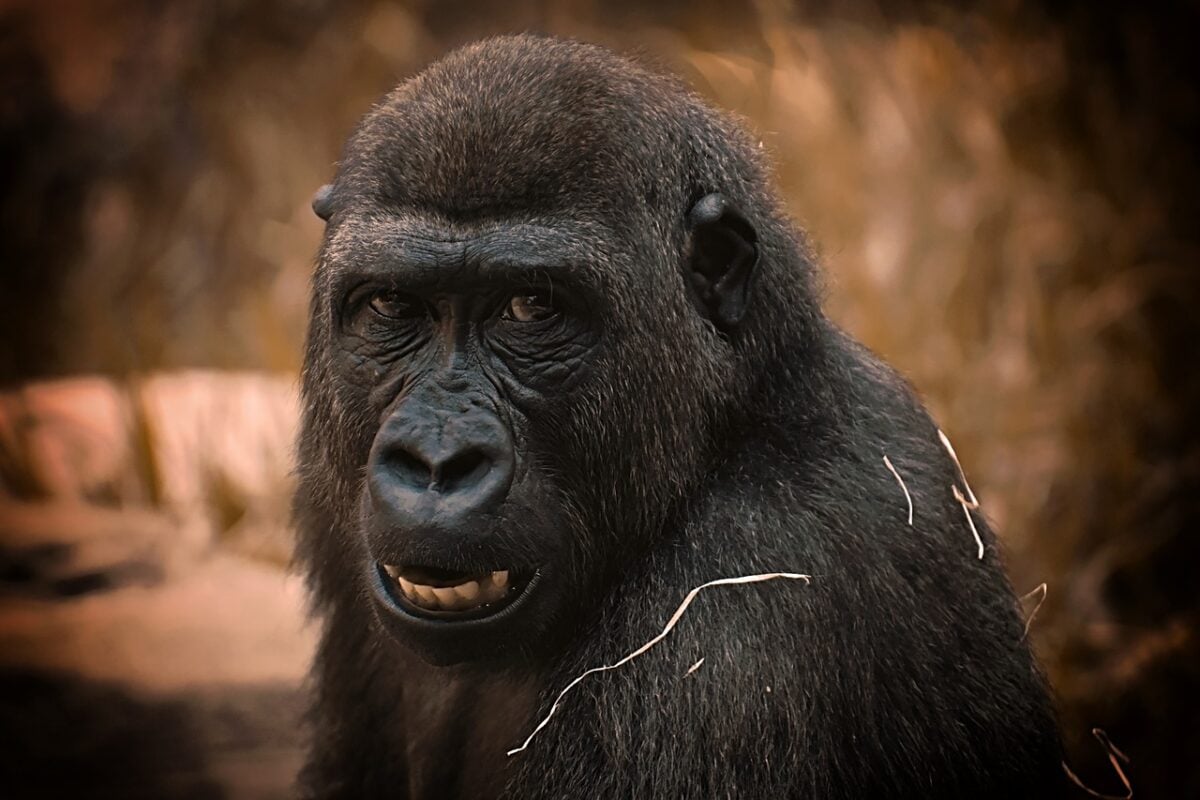
Gorillas are the largest primates on Earth, with males typically weighing 300 to 500 pounds (136 to 227 kg) and standing up to 6 feet (1.8 meters) tall.
They have broad shoulders and thick chests, which help them exhibit immense physical strength and assert dominance. Gorillas also have long arms, which they use to travel from one tree to another. This also enables them to do their iconic knuckle-walk.
Habitat and Geographic Distribution
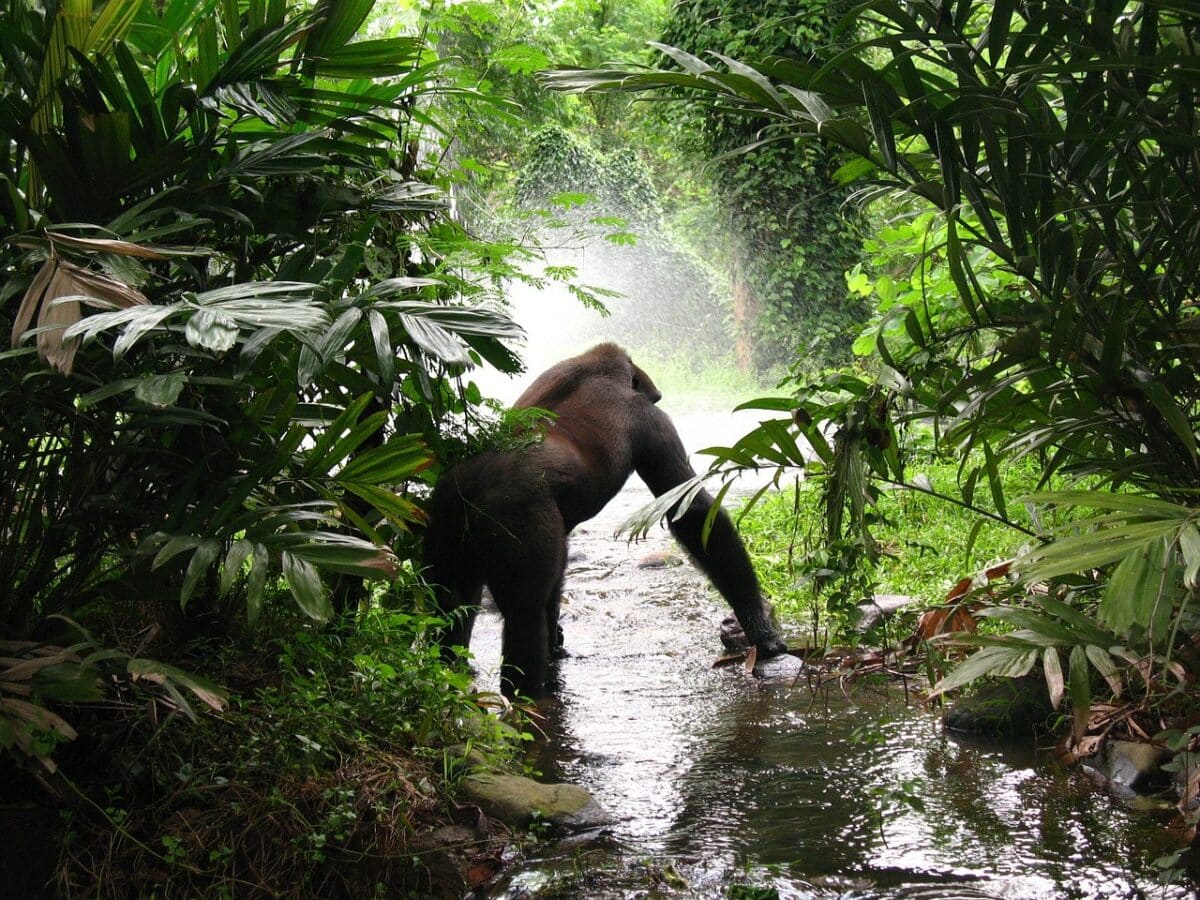
Gorillas are primarily found in Central and East Africa, specifically in the forests of Congo, Rwanda, and Uganda. They prefer dense vegetation and thrive in habitats such as rainforests, swamps, bamboo forests, and montane forests.
Diet and Feeding Habits
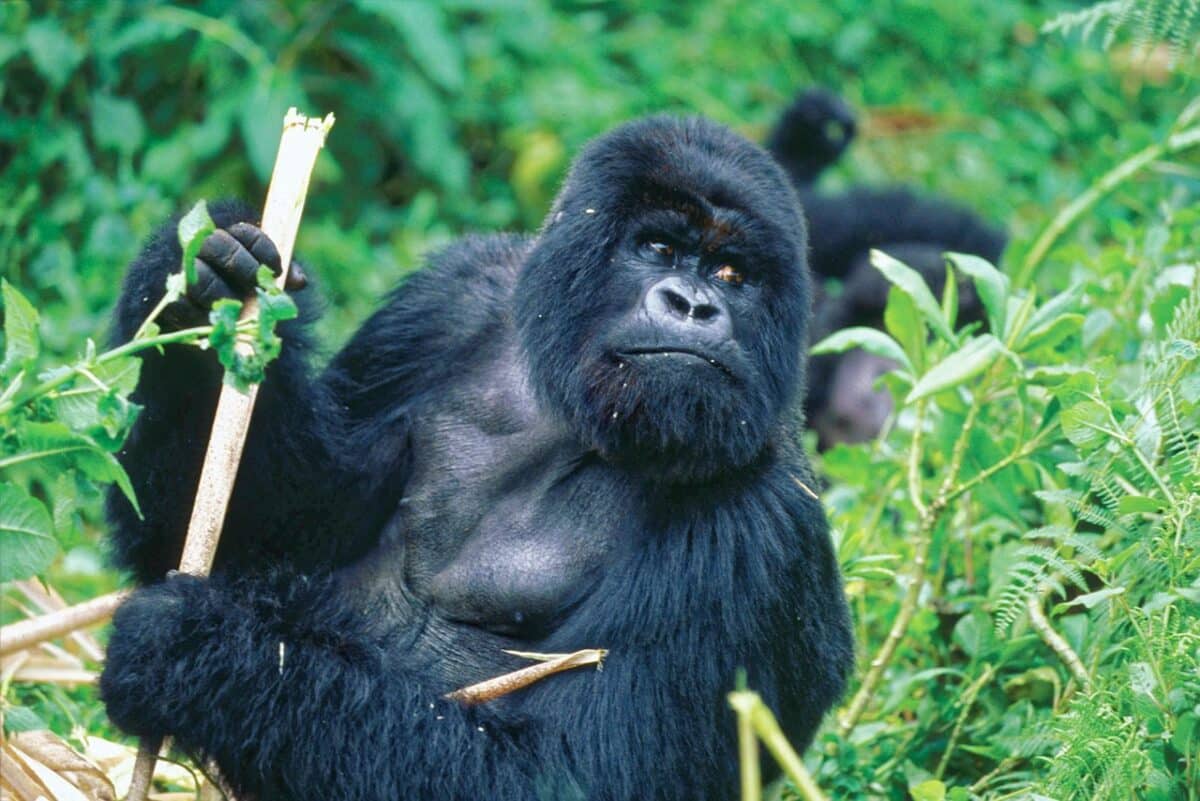
Gorillas eat plants like leaves, fruits, and stems. They spend most of their time looking for food to eat. Adult gorillas may consume up to 66 pounds (30 kg) of vegetation daily to support their massive size and muscle mass.
Behavior and Social Dynamics
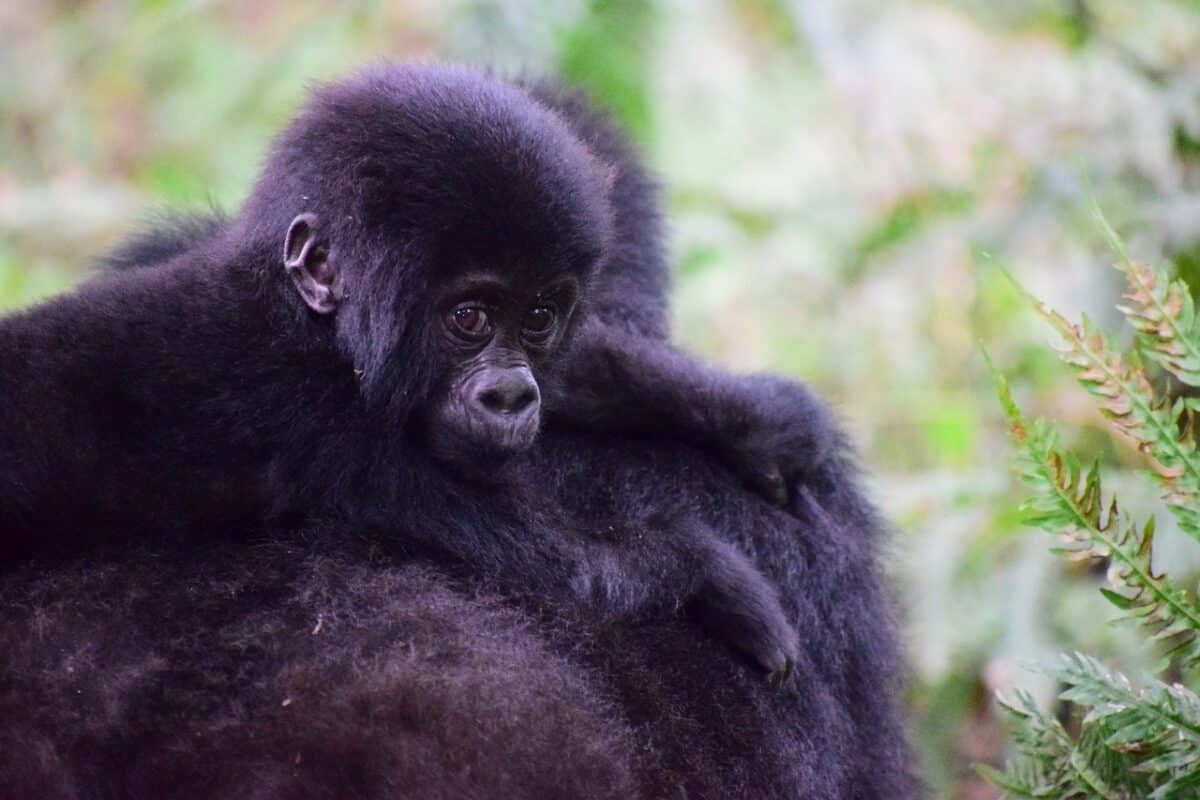
Gorillas are social animals that live in families led by a big male called a “silverback.” They like to groom each other, which helps them bond and stay clean. Gorillas also play games like hitting their chest and chasing each other. This helps them know who’s boss and have fun.
Conservation Efforts and Current Threats To Gorilla Populations
Unfortunately, gorillas face numerous threats, including poaching and habitat loss. Poachers hunt gorillas for their meat, skins, and body parts. Moreover, deforestation for agriculture and logging disrupts their habitats and connectivity.
However, many conservation organizations work hard to protect gorillas and their habitats. These efforts include anti-poaching patrols, habitat restoration, public education, and ecotourism initiatives that raise funds for gorilla conservation and community development.
By supporting these efforts, we can help ensure the survival of these magnificent apes and protect one of our closest relatives on this planet.
Baboon
Baboons are some of the most intriguing primates out there, with unique characteristics and behaviors that continue to fascinate animal lovers and scientists alike.
Physical Characteristics
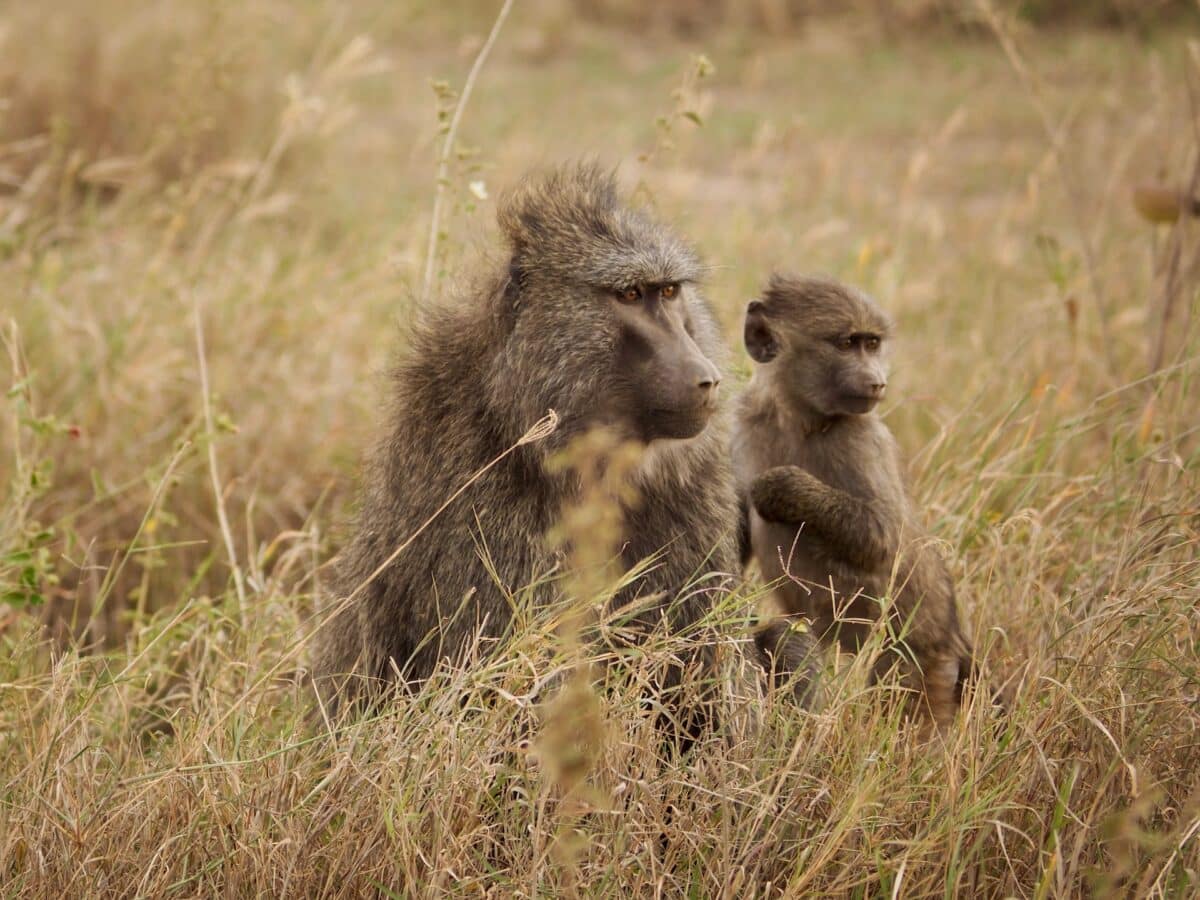
While smaller than their gorilla cousins, baboons are known for their elongated muzzles and lighter fur. These features and overall size and weight make them instantly recognizable. However, their most distinctive physical trait is probably their bare (and bright red!) bum.
Habitat and Geographic Distribution
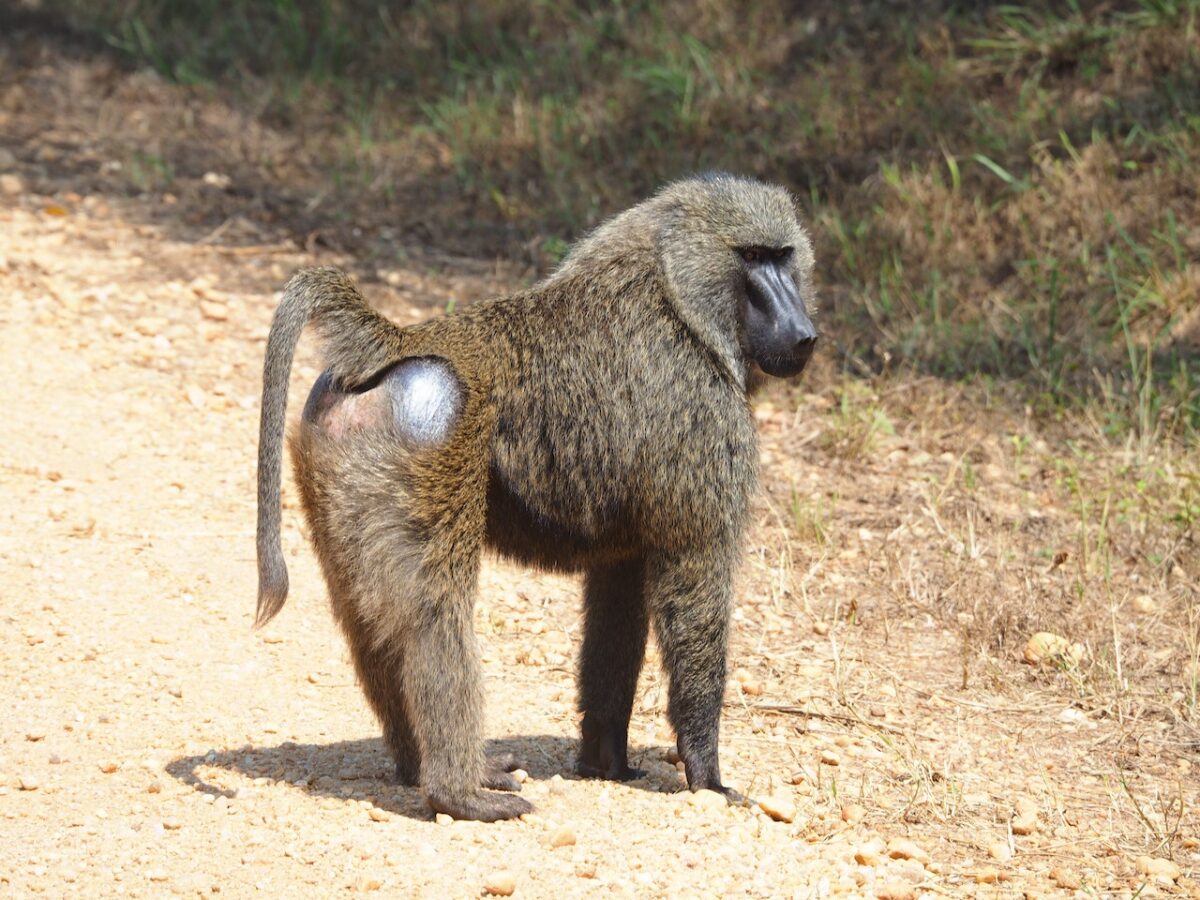
Baboons are versatile and adaptable primates that can occupy a range of habitats, including savannas, woodlands, tropical rainforests, and semi-arid regions. They are highly adaptable to both open and closed habitats, as long as there is a reliable source of water and food nearby. Baboons are known for their ability to thrive in diverse environments – they have even adapted to living in some suburban areas, learning how to sneakily and skilfully steal food from humans.
Baboons are native to Africa and are found in several countries across the continent, as well as some parts of Arabia. Their distribution covers a large portion of sub-Saharan Africa. The different species of baboons have distinct ranges
Diet and Feeding Habits
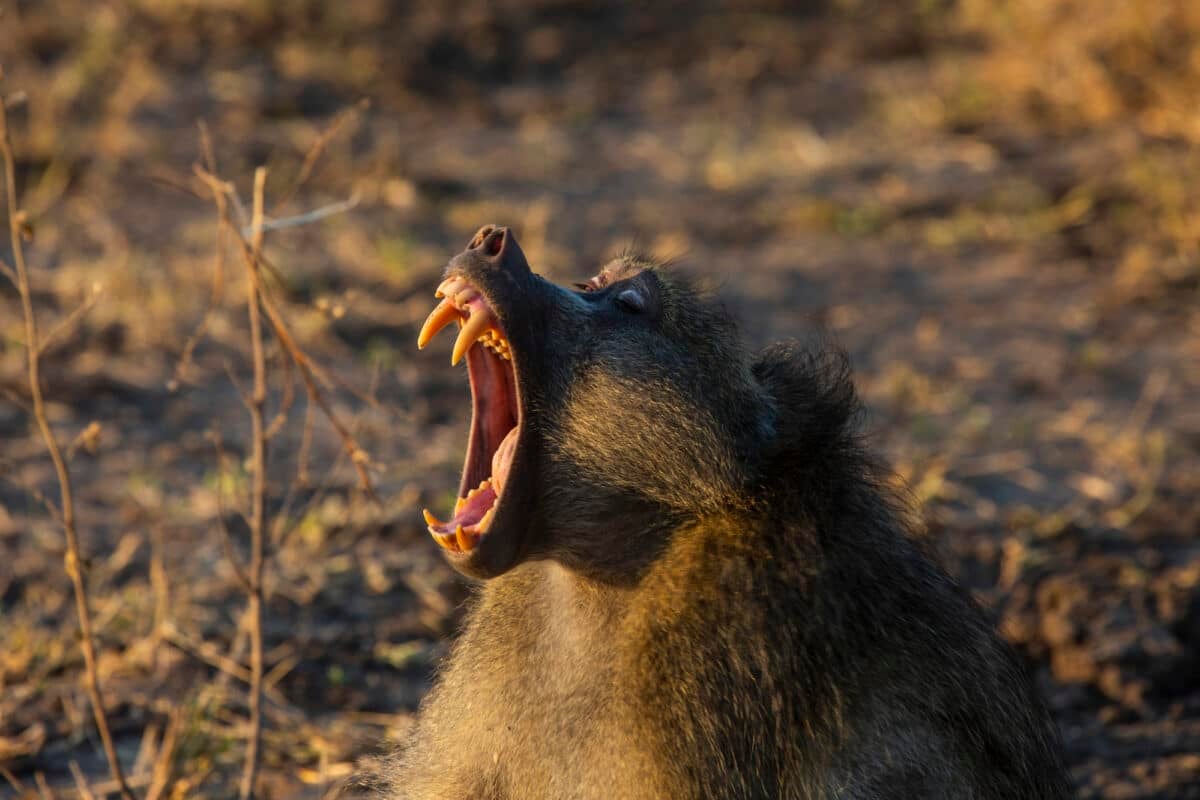
Baboons are highly adaptable and flexible in their feeding habits and their diet varies depending on the availability of food in their environment. Their ability to adapt to different environments has allowed baboons to thrive in various habitats.
They’re opportunistic feeders that follow an omnivorous diet that typically includes insects, fruit, and small animals. The bulk of a baboon’s diet consists of plant material. They feed on leaves, fruits, seeds, flowers, bark, and stems of various plants. Baboons also supplement their diet with insects and other invertebrates.
Behavior and Social Dynamics
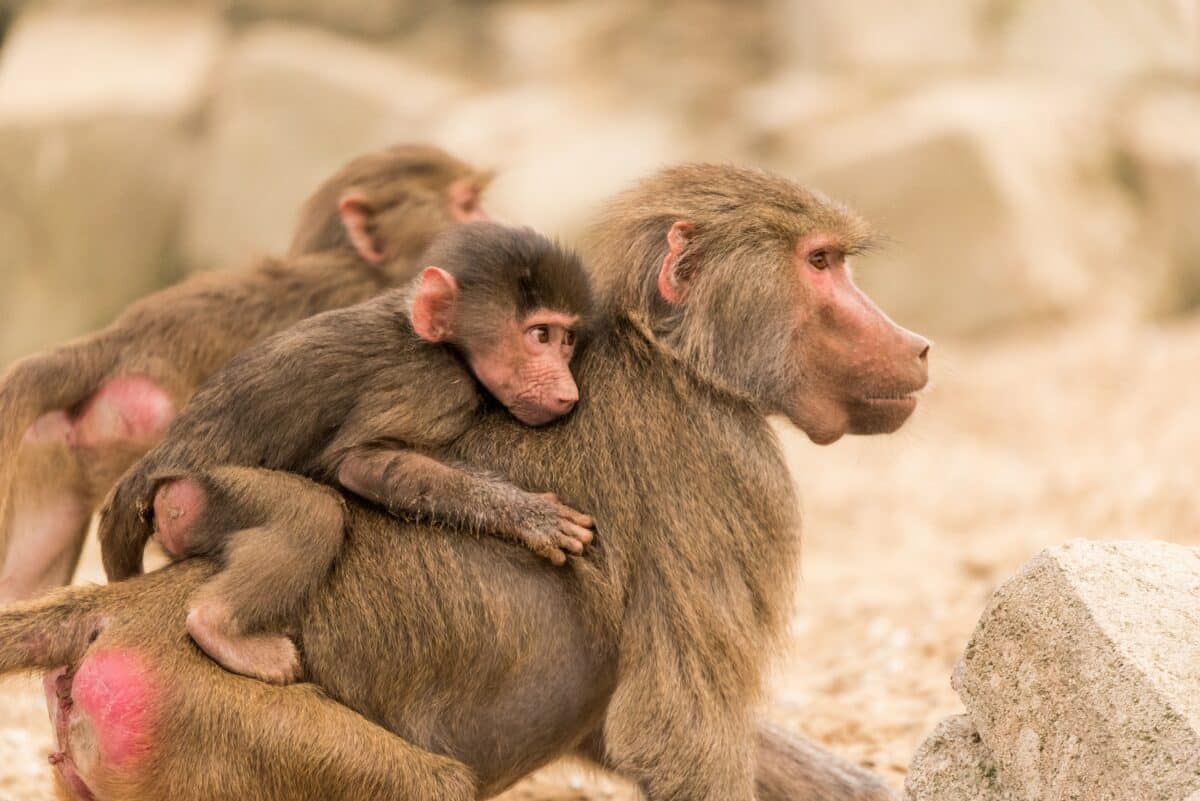
When it comes to behavior and social dynamics, baboons truly shine. Troops can reach up to 200 individuals and operate within a dynamic hierarchy based on strength and dominance.
Leadership roles are typically reserved for mature males, but females also play a significant role in maintaining troop cohesion and ensuring the survival of their young.
Conservation Efforts and Current Threats To Baboon Populations
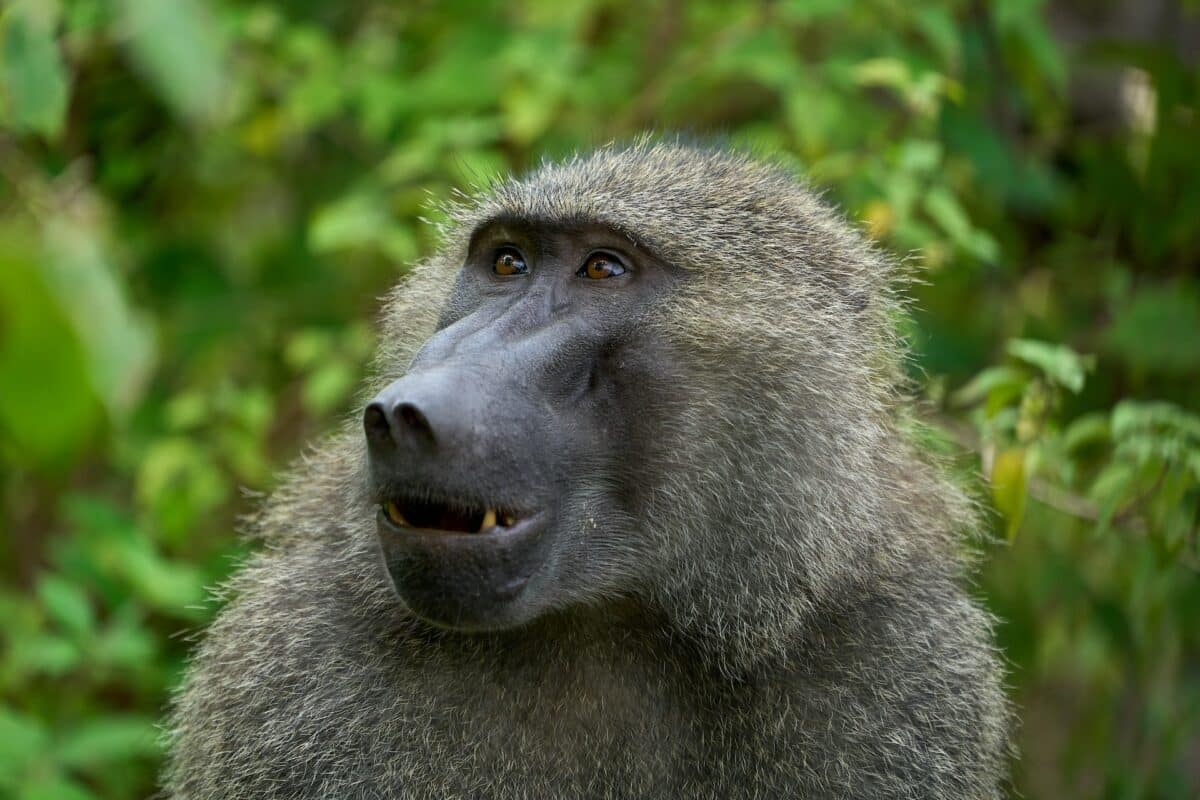
Unfortunately, baboon populations face numerous threats, including habitat loss and human-wildlife conflict. As human populations continue to encroach on baboon territory, these primates risk losing their natural habitats and sources of food.
Conservation efforts are underway to mitigate these threats, including education campaigns and establishing protected areas. But more work is needed to ensure the continued survival of these remarkable animals.
Comparisons and Contrasts
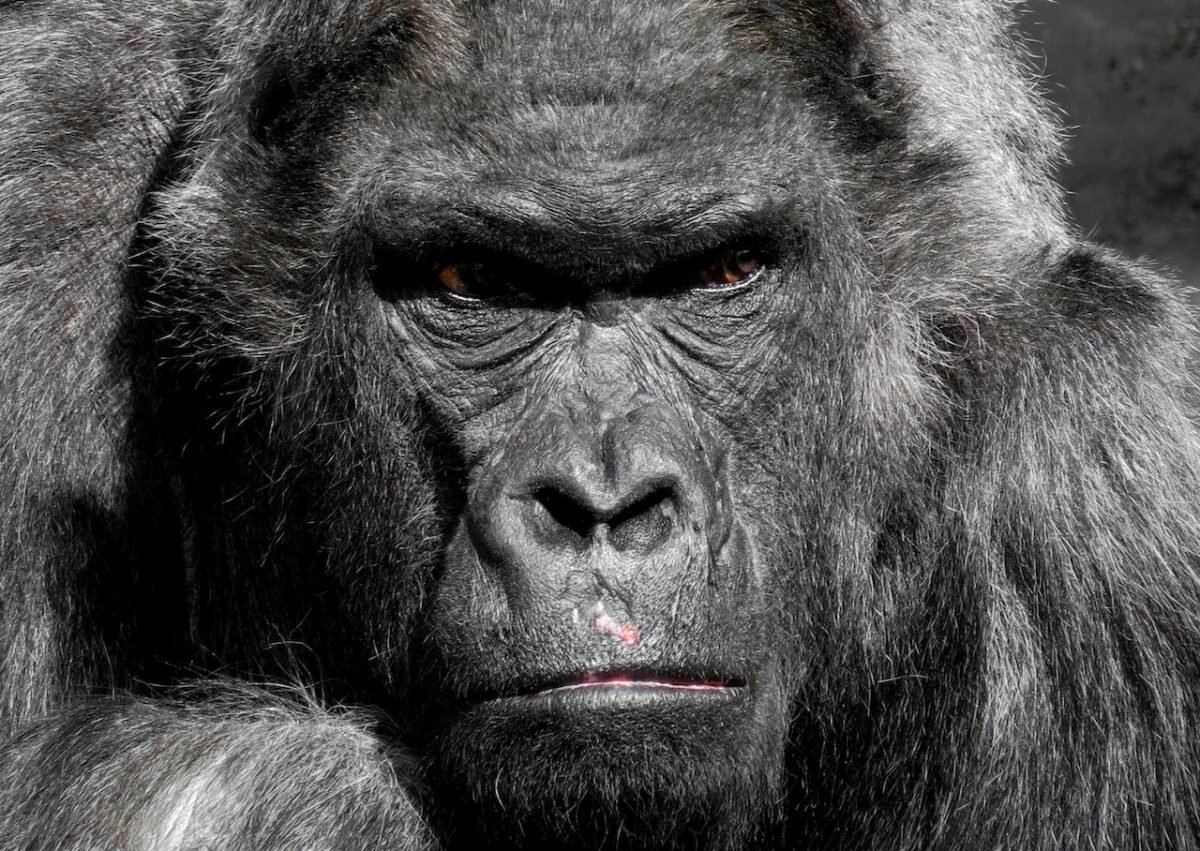
Genetic Similarity and Evolutionary Relationships
Gorillas and baboons may both fall under the primate category, but the genetic similarities and evolutionary relationships between them and humans differ. Gorillas, in particular, share more than 98% of their DNA with humans, making them one of our closest relatives. On the other hand, baboons share approximately 94% of their genetic makeup with humans.
Evolutionarily, gorillas and baboons diverged from the human lineage around 7 and 25 million years ago. Gorillas are closely related to humans through their shared ape ancestors, while baboons are more closely related to Old World monkeys.
Differences In Physical Appearance and Feeding Habits
Despite their similar classifications as primates, gorillas and baboons have distinct physical appearances and feeding habits.
Gorillas are much larger, with males weighing up to 400 pounds, while baboons typically weigh around 50 pounds. Gorillas have powerful arms and large chests, while baboons have long snouts and tails.
Regarding feeding habits, gorillas are primarily herbivores and consume large quantities of leaves, shoots, and fruits. Conversely, baboons are omnivores and regularly consume insects and small animals in addition to their plant diet.
Gorilla Vs. Baboon: Social Dynamics and Behavior
Both gorillas and baboons live in complex social structures, but their social dynamics and behaviors differ. Gorillas typically live in groups led by a dominant male, with females and their offspring forming a cohesive group.
Baboons, on the other hand, live in troops with a dynamic hierarchy. Males compete for dominance, and females often have a higher social rank.
Gorillas are generally peaceful and spend their days foraging and caring for their young. Baboons, however, can be aggressive and territorial, with male-female relationships often characterized by tension and conflict.
Conservation Efforts and Threats Faced by Each Species
Conservation efforts for both gorillas and baboons have become increasingly important as both species face declining populations due to habitat loss, hunting, and disease.
The International Union for Conservation of Nature (IUCN) classifies all gorilla subspecies as either endangered or critically endangered. Baboons are included in the IUCN’s Red List of Threatened Species.
Check out Four out of six great apes one step away from extinction.
Efforts to protect gorillas and baboons include establishing protected areas, promoting sustainable tourism, and working with local communities to reduce hunting and habitat destruction. Diseases, such as the Ebola virus for gorillas and tuberculosis for baboons, remain a significant threat to both species.
Conclusion
| Key Points |
| Gorillas and baboons have long been the center of attention for animal lovers, scientists, and researchers due to their fascinating behavior. |
| Gorillas are much larger, with males weighing up to 400 pounds, while baboons typically weigh around 50 pounds. |
| Efforts to protect gorillas and baboons include establishing protected areas, promoting sustainable tourism, and working with local communities to reduce hunting and habitat destruction. |
| The International Union for Conservation of Nature (IUCN) classifies all gorilla subspecies as either endangered or critically endangered, and baboons are also included in the Red List of Threatened Species. |
| Gorillas, in particular, share more than 98% of their DNA with humans, making them one of our closest relatives. |
While gorillas and baboons may share some characteristics as primates, they have distinct genetic, physical, and behavioral differences. As we continue to learn more about these fascinating animals, it is crucial that we prioritize conservation efforts to protect them and their unique habitats for future generations.
Thank you for reading this post on the gorilla vs. baboon! We share lots of DNA with both species, so which one is your favorite cousin?
If you’re down for more monkey business, take a look at our post where we compare the gorilla to a much smaller (and armoured) animal. Or this post, that compares the gorilla to another armoured animal, namely the rhinoceros.
Join our Forum for free today!


